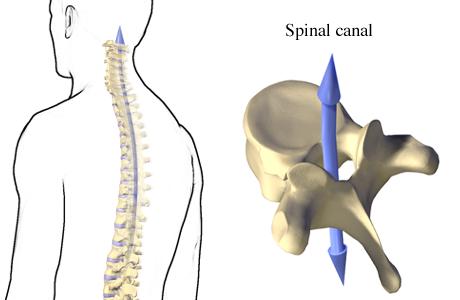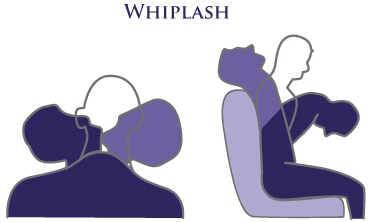|
Back & Neck
 A healthy back supports the body and lets it move freely. When all parts are healthy, your back can support you without pain. A healthy back supports the body and lets it move freely. When all parts are healthy, your back can support you without pain.
The bones of the neck are called cervical vertebrae. The stack together to form a bony column called the spine. The spinal cord runs through the center of the spinal column. Nerves branch off the spine to carry messages. Soft tissues, such as muscles, tendons and ligaments, surround and support the spine.
Common Ailments
Back
Back ailments are a frequent problem within the general community. It can affect the young as much as it can affect
the elderly in the population, while the demographics on particular types of back ailments may vary.
Bulging Disk - Disks are cushions of tissue between the vertebrae that act as shock absorbers.
Each disk has a spongy center, or nucleus. When the disk is squeezed too much, the nucleus can push on the outer ring and cause a bulge. The
bulging disk can then press on spinal nerves and cause back and leg pain.
Ruptured Disk - With a ruptured disk (also called a herniated or slipped disk), the outer ring
(annulus) breaks open and allows the soft nucleus to squeeze out. The nucleus then presses against nerves, causing pain.
Osteoarthritis - As disks and joints wear out with age, bone growths (spurs) form on the vertebrae. Bone spurs
can irritate nerves and cause narrowing (stenosis) of the spinal canal. This can lead to back pain.
Neck
There are many types of neck problems. Some problems are linked to injury, aging, or posture.
 Strains and Sprains - Problems may be due to muscle strain or overuse of the neck. The soft
tissue of the neck may be slightly inflamed. Strains and Sprains - Problems may be due to muscle strain or overuse of the neck. The soft
tissue of the neck may be slightly inflamed.
Whiplash and Other Injuries - Whiplash occurs when muscles and ligaments in the neck are suddenly
overstretched. This can be from an auto accident, sports injury, or fall.
Weakened Disks - A simple action, such as a sneeze or cough, can cause a disk to herniate (bulge).
This puts pressure on the nerve. Over time, disks can also degenerate.
Common Treatments
Bulging Disk Treatments - Bulging disc treatments come in a variety of forms. Often, bulging disc treatments start off with conservative therapies because most bulging disc cases are mild and patients start to feel better after a few weeks. As time goes on, however, your physician could recommend a stronger or more invasive bulging disc treatment to address symptoms that are having an impact on your quality of life. Treatments can range from rest to exercises to anti-inflammatory medications, pain medications and cortisone injections.
Ruptured Disk Treatments -Most herniated discs heal on their own over time (one to six months). More than 90% of patients who have a herniated disc will improve within six months after nonsurgical treatment. For this reason, nonsurgical treatment is usually tried before surgery is
considered. Nonsurgical treatment usually includes rest, medication to control pain and inflammation and exercises to reduce pain and strength the muscles.
Surgery may become necessary in only a small number (less than 10 percent) of people who have herniated discs.
Neck Sprains and Strains - Neck sprains, like other sprains, will usually heal gradually, given time and
appropriate treatment. The patient may have to wear a soft collar around your neck to help support the head and relieve pressure on the ligaments so they have
time to heal. Pain relievers such as aspirin or ibuprofen can help reduce the pain and any swelling. Muscle relaxants can help ease spasms. Most symptoms
of neck sprain will go away in 4 to 6 weeks. However, severe injuries, may take longer to heal completely.
Whiplash - No single treatment has been scientifically proven as effective for whiplash, but pain relief medications
such as ibuprofen (Motrin, Advil) or naproxen (Aleve, Naprosyn), along with gentle exercises, physical therapy, traction, massage, heat, ice, injections and
ultrasound, all have been helpful for certain patients.
Home | About Dr. Fox | Accolades | Athletes | News
Knees | Back & Neck | Shoulder & Collarbone | Hand & Wrist | Foot & Ankle | Total Joint Replacements | Sports Medicine/Athletic Injuries | Pain Management | Nerve Injuries | Joint Injections
|

